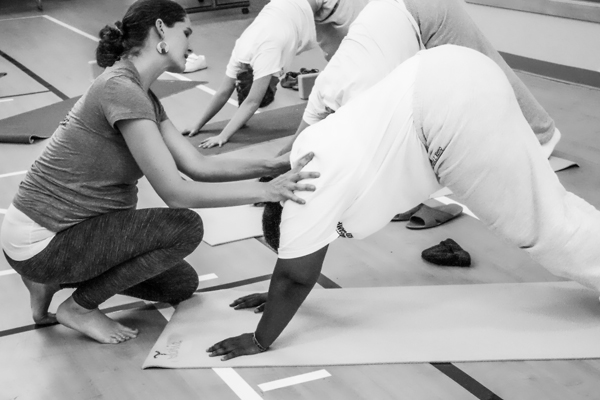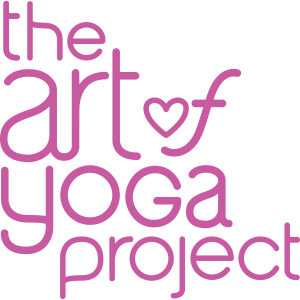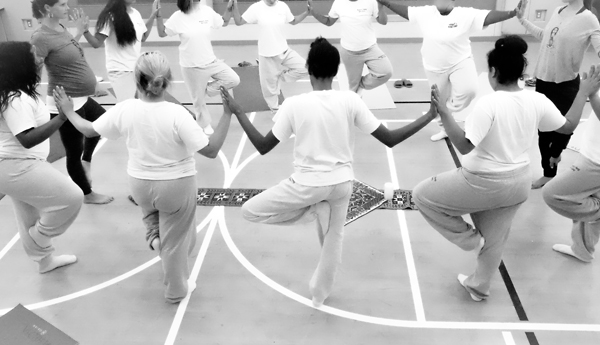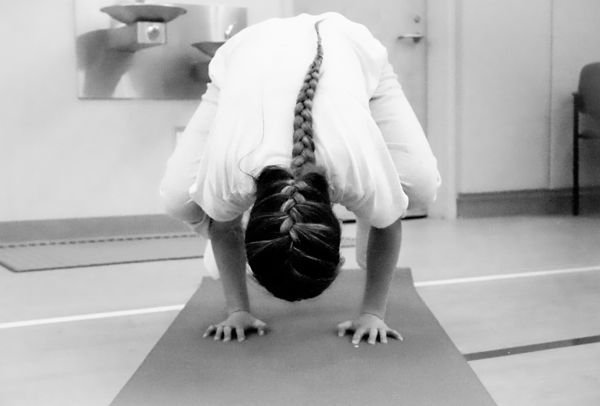Yoga Behind Bars: Healing for Incarcerated Young Women

By Michelle Grambeau
Original publication July 2015 on the Namaste Foundation blog
Operating within the juvenile justice system, The Art of Yoga Project provides yoga, mindfulness and creative arts programming for incarcerated and exploited teen girls.
I had the opportunity to visit the center last week to participate in the weekly yoga practice and join forces on a visual storytelling project with the girls. After fingerprint tests and security clearance, a process that took weeks, I was granted access. As a yoga teacher myself I have been in more yoga classes than I can count, yet entering onto the grounds of Kemp Camp was entirely new territory.
There is a diverse and complex nature to the ‘how’ and ‘why’ these young ladies (ages 12-18) become incarcerated. Yet, consistently 90-95% self report some form of trauma—sexual, physical or emotional abuse, exploitation, or prolonged neglect.
Knowing the above statistics begs of us as a society to ask smarter questions, looking deep into the cycle of trauma, victimization, delinquency and reformation.
- What does true rehabilitation look like?
- How do we empower and heal the mind and body of a traumatized girl moving through the challenging transition into womanhood?
- What tools can we offer her so she has a shot at building a healthy future for herself?
Onsite at the Juvenile detention center it was clear the first step, which many facilities overlook, is the need for gender specific rehabilitation. The Art of Yoga Project was envisioned to meet this need in a variety of enlivening ways.
With recognition of the cyclical nature of victimization and abuse, all certified yoga teachers, therapists, art and writing educators receive trauma-informed and strength-based training. The end result is a population of girls who have safe space to physically, emotionally and mentally ground and center. With tangible weekly practice in emotional regulation and healthy relationship building comes an opportunity to heal the
patterns of hurt in body, mind and community.
When practicing bakasana crow pose (a rather difficult balancing pose on the hands), I told the girls that they could one day float forward and lift up into a headstand. The response was unanimously, “Oh yea? Show us.”
The pressure was on. All those hours of practicing and teaching yoga were about to pay off. As I moved through this challenging transition, I could feel every eye in the room intensely. After a successful delivery, I lowered my feet to the ground, one of the girls blurts out, “Daaaaaaaaaaang Michelle” and the room erupted into laughter and conversation. There was vulnerability, unknown and a willingness to see the humanness in the each other’s eyes. After practice, two students asked me to take a photo of them in the same crow pose. It was in this moment that it became ever more apparent, the importance of having strong female role models and the safe space to express, share and relate.




